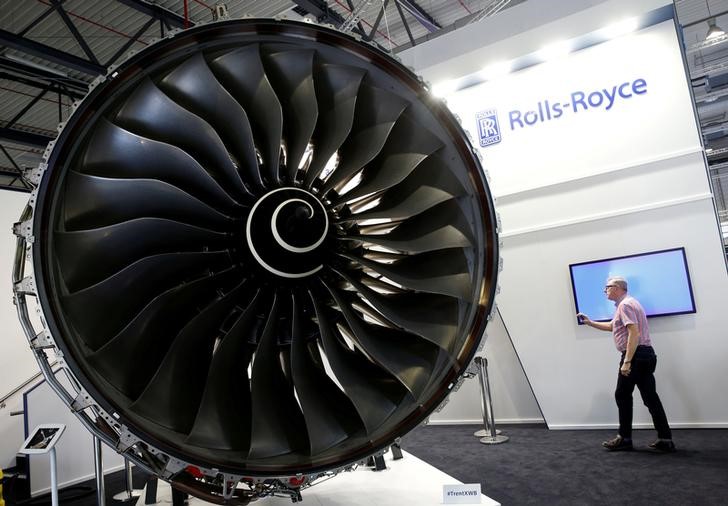By Paul Sandle
LONDON (Reuters) - Rolls-Royce (LON:RR), the British jet engine maker battling to recover from a string of profit warnings, said costs savings would be at the top end of its target range this year as it responds to tough conditions in some markets.
The company, which makes engines for fighter jets, commercial aircraft, ships and nuclear submarines, is one year into a turnaround programme aimed at cutting costs after a slowdown in several of its biggest markets.
But some analysts say it has a mountain to climb, having made just 15 percent of a consensus full-year profit forecast of 686 million pounds in the first half of the year.
At 1040 GMT, Rolls-Royce shares, which have recovered from a February low of 488.8 pence, were down 2.7 percent at 734.5 pence.
"We have made steady progress in 2016 to date, delivering a ramp up in large engine production and implementing the first stage of our transformation programme," Chief Executive Warren East said in an update to investors.
"Overall, we remain comfortable that our expectations for profit and free cash flow remain achievable."
The company said it now expected cost savings this year to be at the top end of a 150-200 million pound forecast range.
East has cut 20 percent of group management and accelerated the manufacturing process. For example, the firm is assembling a Trent 100 engine 27 percent quicker than a year ago, he said.
While it is trading in line with expectations for 2016, Rolls-Royce said the wider market outlook was mixed.
Demand for its engines for extra wide-body civil aircraft was strong, but there was further weakening in business aviation and no sign of recovery in offshore oil and gas markets for its marine business, where the order book remained "very weak".
Finance chief David Smith told investors civil orders were lower this year, but deferrals and cancellations were modest.
For 2017, Rolls said near-term prospects remained mixed, while the long-term order book remained at near record levels.
East said his team was starting to look beyond fixing the nuts and bolts towards longer-term strategy, where there were new technology opportunities, for example in electric engines.
"During 2017 there might be some output from starting to look more seriously at some of the strategic stuff, but I still expect a broad portfolio of different market applications," he told reporters.
NEW STANDARD
Rolls-Royce also highlighted the affect of a change in its accounting procedures to the IFRS-15 standard.
"It doesn't affect the profitability of any contract, it is simply pushing back the timing of when we recognise that profit," Smith said. "The new accounting standards do not affect our cash position in any way."
Under the rules, due to be brought in 2018, Rolls-Royce, which makes most of its money from maintenance rather than at the point of sale, will have to wait until it provides servicing before it can book more revenue and profit from long-term deals.
It said its 2015 civil aviation operating profit would have been 900 million pounds lower under the new rules.
Rolls-Royce has not given a specific profit forecast for this year, other than saying it would take a 650 million pound hit due to weaker demand and a variety of other factors.
Smith, however, said cash flow from its civil aircraft business - its biggest - was improving.
"By implication we expect to see stronger cash flow for 2017, so something around or above break even next year for free cash flow is absolutely what we targeting," he said.
The company is forecasting a cash outflow of up to 300 million pounds this year.
